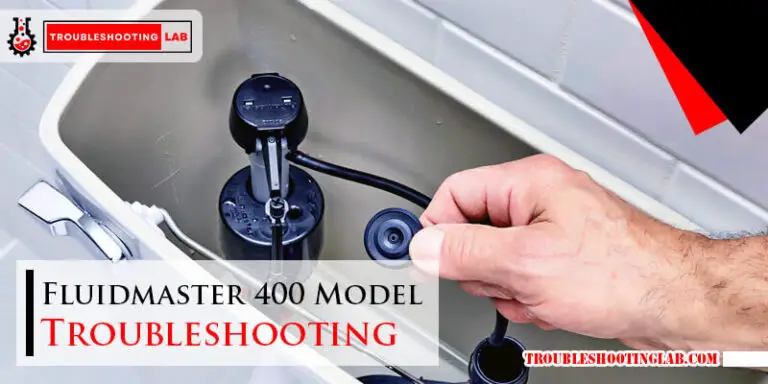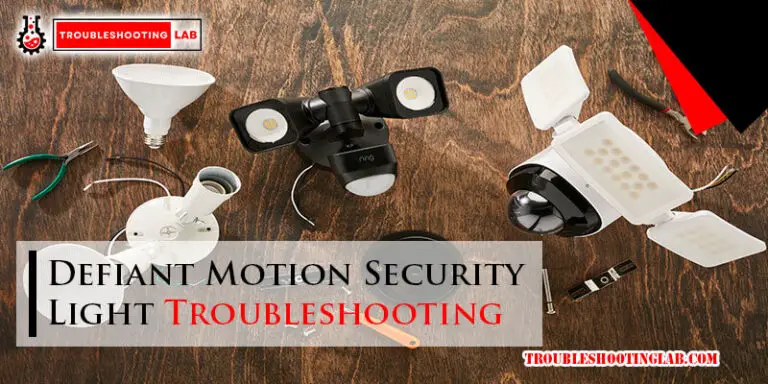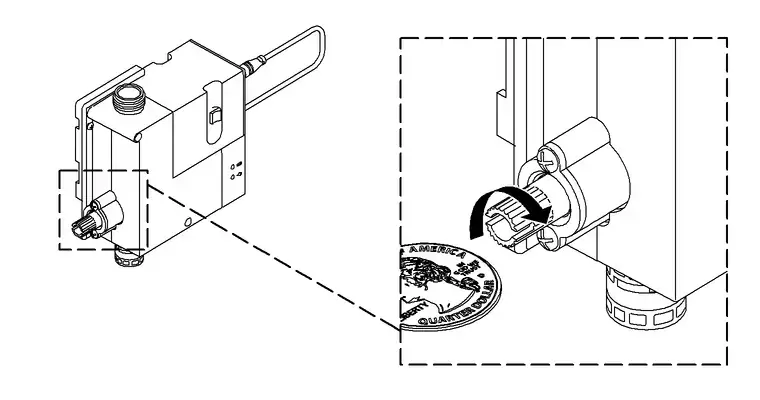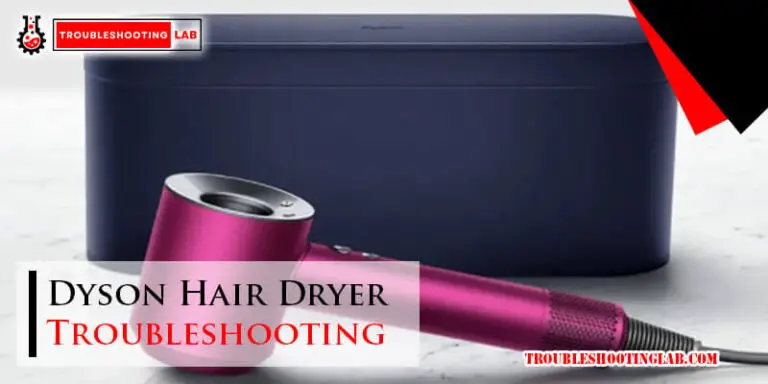Badger 900 Garbage Disposal Troubleshooting: Quick Fixes
Is your Badger 900 garbage disposal acting up? Dealing with a malfunctioning disposal can be frustrating, especially when you rely on it to keep your kitchen running smoothly.
Maybe it’s not turning on, making strange noises, or draining slower than usual. Whatever the issue, you’re not alone, and the good news is that many common problems have simple fixes you can handle yourself. In this guide, we’ll walk you through step-by-step troubleshooting tips to get your Badger 900 back in action.
Whether you’re dealing with a minor hiccup or something more serious, you’ll find practical solutions to save time, money, and stress. Stick around—you might be surprised how easily you can solve the problem and get back to a hassle-free kitchen.

Common Issues With Badger 900
The Badger 900 garbage disposal is a dependable kitchen appliance. Yet, like any machine, it can face problems over time. Understanding these issues can save time and money. Below are common problems users encounter and their possible causes.
Unit Not Turning On
If your Badger 900 won’t start, check the power supply first. Ensure the unit is plugged in securely. Also, inspect the circuit breaker for tripped switches. Press the reset button located on the bottom of the unit. If it still doesn’t work, the motor could be defective.
Humming Noise Without Grinding
A humming noise often points to a jammed flywheel. Turn off the unit immediately to prevent damage. Use the included wrench to rotate the flywheel manually. This helps dislodge trapped debris. Avoid forcing it, as this may damage internal parts.
Leaks From The Unit
Leaks can occur from the sink flange or discharge pipe. Tighten the mounting bolts to secure the flange. Inspect the rubber gasket for wear or tears. Replace the gasket if needed. For leaks at the discharge pipe, check the connection and tighten it.
Slow Drainage
Slow drainage happens due to clogging in the drain pipe. Disconnect the unit and clear the blockage using a plumbing snake. Avoid pouring grease or fibrous materials into the disposal. These items often cause blockages over time.
Resetting The Badger 900
If your Badger 900 garbage disposal suddenly stops working, resetting it might be the easiest fix. Many homeowners overlook this step, but it can save you time and money. Before you call for professional help, learn how to reset the device yourself—it’s simpler than you might think.
Locating The Reset Button
The reset button on the Badger 900 is a small red button located at the bottom of the disposal unit. You’ll find it underneath the sink, usually near the center of the device. It’s easy to miss, so make sure you have good lighting when searching for it.
If you’re struggling to spot it, try crouching down and looking directly under the disposal. The button is usually recessed, so run your fingers gently over the surface to locate it. Once you find it, you’re ready for the next steps.
Steps To Reset Safely
Before pressing the reset button, ensure the disposal is turned off. Flip the switch on the wall to the “off” position to avoid accidental activation. Unplug the unit from the power source if possible—safety first!
After confirming the disposal is off, press the red reset button firmly. You don’t need excessive force; a simple press will do. If the button stays depressed, the reset process is complete.
Once reset, reconnect the disposal to the power source and turn the switch back on. Test the unit by running water and activating the disposal. If it hums back to life, you’ve successfully reset it!
What if the reset button pops out immediately after pressing it? This could indicate a deeper issue, like a jammed motor or electrical fault. In this case, refer to your user manual or consider contacting customer support for further guidance.
Clearing Jams In The Disposal
Dealing with a jammed Badger 900 garbage disposal can be frustrating, but the solution is often simpler than you think. Most jams occur when food scraps or foreign objects get stuck in the grinding chamber, preventing the blades from spinning. The good news? You don’t need to call a plumber right away—many jams can be cleared with a few basic tools and a little patience.
Using An Allen Wrench
One of the easiest ways to clear a jam is by using the Allen wrench that came with your garbage disposal. Don’t have it? No problem—any standard 1/4-inch Allen wrench will work. First, ensure the disposal is powered off by unplugging it or switching off the circuit breaker.
Locate the small hex-shaped hole at the bottom of the disposal unit. Insert the Allen wrench into this hole and rotate it back and forth. This motion manually loosens the jammed particles. You’ll feel resistance at first, but keep turning until the wrench moves freely.
Once the jam is cleared, plug the unit back in and run water through the sink while briefly turning on the disposal to ensure it’s functioning correctly.
Removing Stuck Debris
If the Allen wrench doesn’t do the trick, you may need to remove the debris manually. Again, safety first—make sure the disposal is unplugged or the circuit breaker is off. Never reach into the disposal while it’s connected to power.
Use a flashlight to look inside the disposal. Common culprits include bones, silverware, or even fruit pits. Use long-handled tongs or pliers to carefully extract the stuck item. Avoid using your hands, even if the disposal is off, as the blades can still cause injury.
After removing the debris, restore power and test the unit by running water and turning it on briefly. If it still doesn’t work, there could be a deeper issue requiring professional help.
Clearing jams doesn’t have to be intimidating. Whether you’re using an Allen wrench or removing debris, these simple steps can save you time and money. What’s the strangest thing you’ve ever found stuck in a garbage disposal? Let us know in the comments below!
Fixing Leaks
Fixing leaks in your Badger 900 garbage disposal can prevent bigger issues. Leaks can occur in different areas and need quick attention. Identifying the source is the first step to solving the problem. This guide will help you address common causes of leaks.
Inspecting The Sink Flange
The sink flange connects your disposal to the sink. Over time, it may loosen or wear out. To inspect it, turn off the disposal and disconnect power. Look for water pooling around the flange. Tighten the mounting bolts if they are loose. Use plumber’s putty to reseal the flange if necessary.
Checking The Drain Connections
Leaks often occur at the drain pipe connections. Examine the connection between the disposal and the drain pipe. Ensure the screws or clamps are secure. Replace damaged gaskets or tighten the screws if you see a gap. Be cautious not to overtighten, as this can crack plastic parts.
Replacing Worn-out Seals
Worn-out seals can cause leaks in the disposal unit. Check the seals around the motor and internal components. Look for cracks or signs of wear. Purchase replacement seals that match your Badger 900 model. Follow the manufacturer’s instructions to install the new seals properly.
Addressing Power Issues
When your Badger 900 garbage disposal suddenly stops working, power issues are often the culprit. A disposal that’s not turning on can be frustrating, especially when you’re in the middle of cleaning up after a meal. The good news? Most power problems are simple to identify and fix. Let’s tackle this step by step so you can get your disposal back in action.
Checking The Power Supply
Your garbage disposal relies on electricity to run, so the first step is ensuring it’s getting power. Start by checking the outlet where the disposal is plugged in. Is the plug secure? Sometimes vibrations from the disposal can loosen the connection over time. Push it firmly into the socket.
If the outlet seems fine, grab another small appliance, like a phone charger, and plug it into the same outlet. Does it work? If not, the issue might be with the outlet itself, and you may need to call an electrician.
Don’t forget to inspect the reset button located at the bottom of your Badger 900. If it has popped out, press it back in. Many users overlook this small step, but it often solves the problem instantly.
Inspecting The Wall Switch
Is the switch responsible for turning your disposal on and off functioning properly? Flip the switch and listen carefully. Is there any clicking sound or humming noise? If the switch feels loose or there’s no response, it might be faulty.
Test the switch by turning it on and off a few times. If it still doesn’t work, you may need to replace it. Wall switches can wear out over time, especially if they’re used frequently.
If you’re unsure about replacing a switch, consider asking a licensed electrician to help. Safety always comes first when working with electrical components.
Testing The Circuit Breaker
If the outlet and switch seem fine but your disposal remains unresponsive, it’s time to check the circuit breaker. Head to your home’s breaker panel and look for the switch labeled for your kitchen or garbage disposal. Is it flipped to the “off” position?
If yes, reset it by flipping it back to “on.” Circuit breakers can trip due to overloads or short circuits. If the breaker trips again immediately, it could indicate a deeper electrical issue with the disposal itself.
Ask yourself: Is there anything else plugged into the same circuit? Overloading the circuit with multiple appliances can cause repeated trips. Disconnect any extra devices and try resetting the breaker again.
Addressing power issues might seem intimidating, but a little investigation can save you time and money. Have you ever solved a garbage disposal problem yourself? Share your tips in the comments below and help others troubleshoot their Badger 900 with confidence!
Improving Drainage
Improving drainage in your Badger 900 garbage disposal is essential for smooth operation. Over time, blockages and improper connections can cause slow water flow. Addressing these issues can prevent odors and keep your system efficient. The steps below will guide you through common fixes.
Clearing Clogs In The Drainpipe
Clogs in the drainpipe often cause poor drainage. Start by disconnecting the disposal unit from power. Use a flashlight to inspect the drain opening for visible debris. Remove any stuck food particles or waste with pliers or a hook tool. Then, disassemble the P-trap under the sink. Flush it with warm water to clear any blockages. Reassemble it securely to avoid leaks.
Using A Plunger Effectively
A plunger can help dislodge stubborn clogs in the drain. Fill the sink with enough water to cover the plunger cup. Position the plunger over the drain and apply firm, even pressure. Push and pull the plunger for about 20 seconds. Check if the water flows freely afterward. Repeat the process if necessary.
Inspecting The Dishwasher Connection
A faulty dishwasher connection can also affect drainage. Locate the hose linking your dishwasher and garbage disposal. Ensure the hose is free of kinks or clogs. Disconnect it and rinse it thoroughly if needed. Check the knockout plug inside the disposal inlet. If it hasn’t been removed, carefully knock it out with a screwdriver.
Preventive Maintenance Tips
Keeping your Badger 900 Garbage Disposal in great shape isn’t just about fixing issues when they arise. It’s also about taking simple steps to prevent those problems in the first place. With a little care, you can avoid breakdowns and keep your disposal running smoothly for years.
Avoiding Hard-to-grind Items
Not all food scraps are disposal-friendly. Tossing in bones, fruit pits, or fibrous foods like celery can jam the blades or damage the motor. If you’ve ever had a disposal stop mid-grind, you know how frustrating it can be.
Instead, throw tough items in the trash or compost bin. Your disposal works best with softer scraps like small vegetable pieces or leftovers. By choosing what goes in, you’ll reduce wear and tear.
Running Water During Operation
Always turn on cold water before starting your disposal. Water helps flush ground food down the drain, preventing buildup inside the unit. If you skip this step, debris can collect and lead to clogs.
Let the water run for a few seconds after switching off the disposal, too. This extra rinse clears any lingering particles. It’s a small habit that makes a big difference.
Cleaning The Unit Regularly
Over time, grease and food residue can coat the interior of your garbage disposal. This not only leads to odors but can also affect how well the blades spin. Cleaning doesn’t have to be complicated.
Drop some ice cubes and rock salt into the disposal and run it for a few seconds. The ice scrubs the blades while the salt tackles residue. For a fresh smell, add a few lemon or orange peels afterward.
How often do you clean your unit? If the answer is “rarely,” it might be worth setting a reminder. Regular cleaning keeps your disposal performing like new.
By following these practical tips, you’ll extend the life of your Badger 900 and spend less time troubleshooting. Prevention is always easier than repair, so give your disposal the care it deserves.
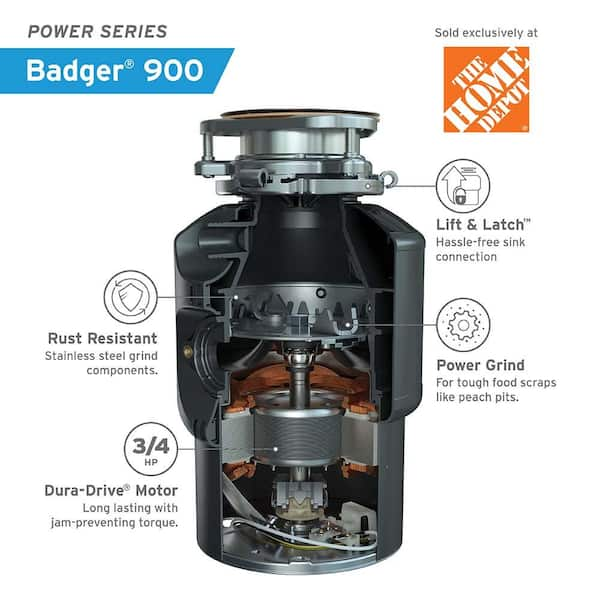
When To Seek Professional Help
Dealing with a faulty Badger 900 garbage disposal can be frustrating. While many issues can be solved with simple fixes, some problems require professional expertise. Knowing when to step back and call an expert could save you time, money, and prevent further damage.
Signs Of Major Damage
Does your garbage disposal make loud grinding noises that sound unnatural? This could indicate severe internal damage, like a broken flywheel or motor. If you hear metal clanging or parts rattling, it’s best to stop using the unit immediately.
Water leaking from your disposal is another red flag. Leaks often mean seals or connections are damaged, and DIY repairs might make the problem worse. A professional can identify the leak’s source and prevent further water damage to your kitchen.
Complete failure to turn on is also a sign of major damage. If resetting the unit and checking the circuit breaker doesn’t resolve the issue, the motor could be burned out. At this point, replacement may be your only option, and a professional can advise you on the best course of action.
Recurring Issues Despite Fixes
Have you fixed the same problem multiple times only for it to return? Constant clogs, jams, or power issues often signal deeper problems. You might be dealing with worn-out parts that need replacing, rather than quick fixes.
Persistent odors, even after cleaning, could point to hidden buildup or trapped food particles. Professionals have tools to access hard-to-reach areas and thoroughly clean your disposal.
If your garbage disposal runs but doesn’t grind food effectively, the blades may be damaged or dulled. Instead of attempting to sharpen them yourself, seek help to avoid injury or further damage.
Ask yourself: how much time and effort are you spending on repairs? If the same issues keep popping up despite your best efforts, it’s time to call in a pro. Their expertise can save you the hassle and ensure your disposal is functioning properly.
Conclusion
Troubleshooting your Badger 900 garbage disposal doesn’t have to feel overwhelming. Start by identifying the issue and follow simple steps to fix it. Common problems like clogs, leaks, or strange noises often have quick solutions. Regular maintenance can help prevent future issues and extend its lifespan.
Always remember to unplug the unit before inspecting or repairing it. If problems persist, seeking professional help might be your safest option. By addressing issues early, you can keep your disposal running smoothly for years. Take the time to care for your appliance, and it will serve you well.

